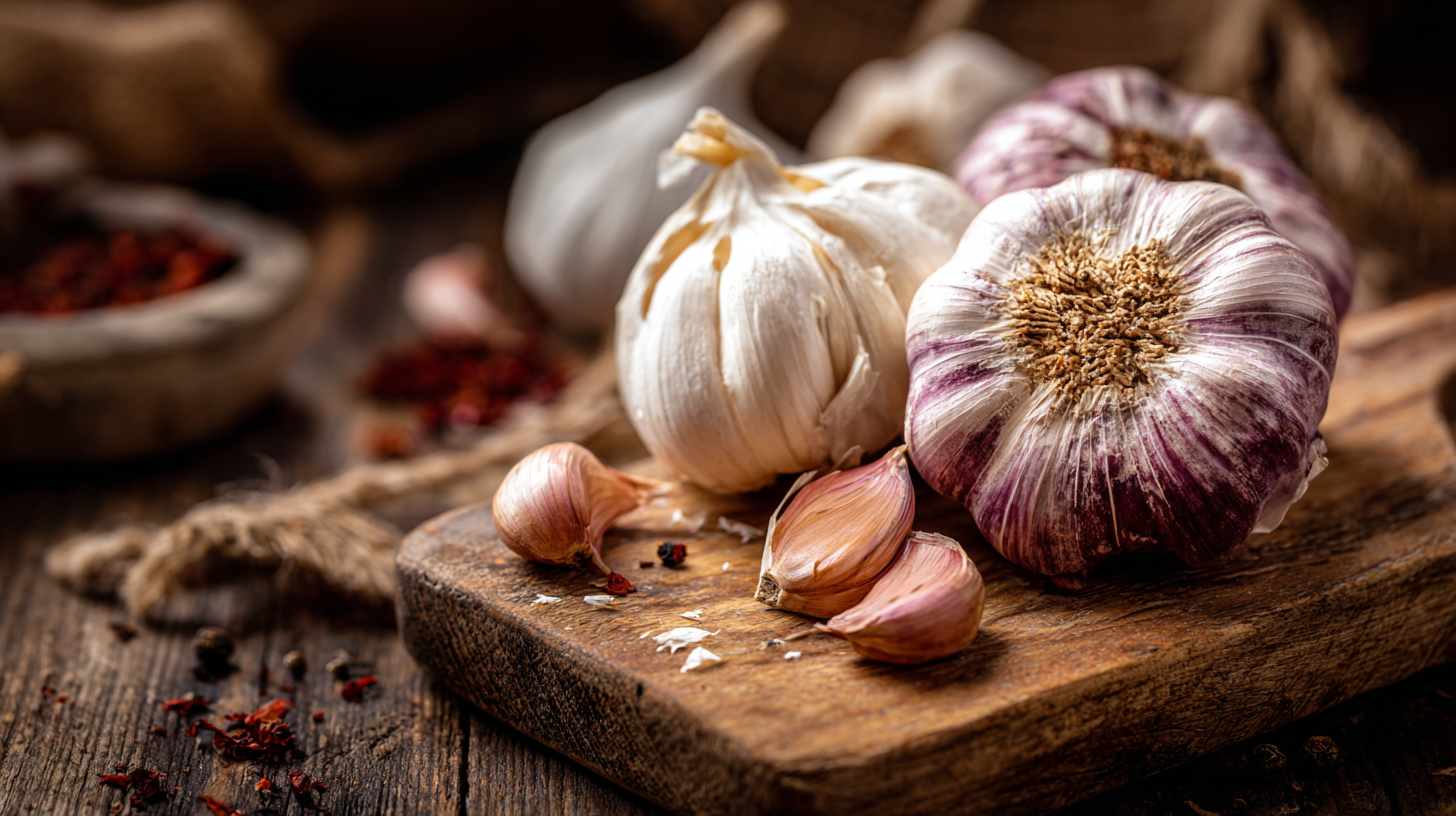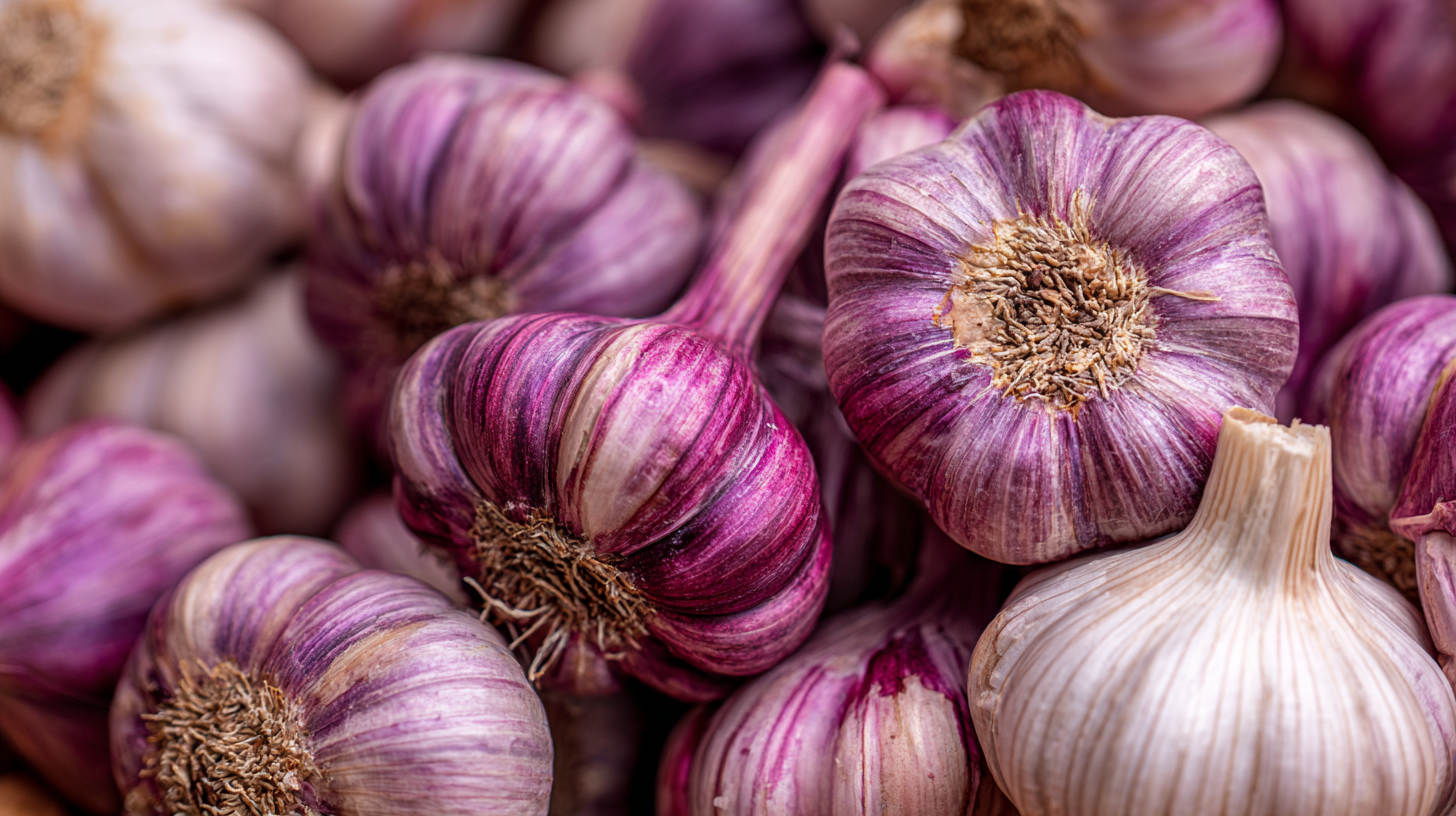50% Response rate
Unveiling Global Standards for Quality Assurance in Best Garlic Extract Production
In the ever-evolving landscape of health and wellness, Garlic Extract has emerged as a powerhouse ingredient celebrated for its numerous health benefits. However, with a saturated market filled with varying quality levels, the need for global standards in the production of Garlic Extract has never been more critical. This blog aims to unveil the essential technical specifications that define high-quality Garlic Extract products, while also providing a comprehensive guide on how to effectively evaluate and select the best options available. By understanding the intricacies of Garlic Extract production, including sourcing, processing methods, and potency measures, consumers can make informed choices that align with their health goals.

Join us as we explore the pivotal role that quality assurance plays in ensuring that the Garlic Extract you choose is not only safe but also potent and beneficial for your wellbeing.
Global Demand for Garlic Extracts: Market Trends and Projections for 2024
The global demand for garlic extracts is witnessing significant growth, driven by their health benefits and applications in various industries, including pharmaceuticals and dietary supplements. According to a report by Grand View Research, the garlic extract market size is projected to reach USD 1.57 billion by 2024, expanding at a compound annual growth rate (CAGR) of 9.4%. This surge is largely attributed to the increasing consumer awareness of natural products and the rising trend towards preventive healthcare, as garlic is renowned for its anti-inflammatory and antioxidant properties.
Moreover, the Asia-Pacific region is expected to dominate the market due to a burgeoning demand from countries like China and India, where garlic is traditionally used in culinary practices and herbal remedies. The International Garlic Research Association also notes that the changing lifestyle and dietary preferences among consumers are contributing to the rising incorporation of garlic extracts in health supplements. This shift is set to foster a more competitive environment, prompting producers to adhere to global quality assurance standards to meet consumer expectations and ensure product efficacy while capitalizing on the market opportunities presented in 2024.
Key Quality Indicators: What Makes a High-Quality Garlic Extract?
When it comes to evaluating garlic extracts, several key quality indicators play a crucial role in determining their effectiveness and purity. Firstly, the concentration of allicin, the compound responsible for garlic’s distinctive health benefits, is a pivotal measure. High-quality garlic extracts should maintain a potent level of allicin, as this directly correlates with their therapeutic properties. The extraction process used also significantly affects allicin levels; cold-pressed methods tend to preserve these compounds better than heat-based extractions.
Another important consideration is the presence of heavy metals and contaminants, which can tarnish the reputation of garlic products. Reliable manufacturers adhere to strict quality assurance protocols, ensuring that their extracts are free from harmful substances. Additionally, the source of garlic plays a vital role; organic, non-GMO garlic from reputable farms typically yields higher quality extracts. As consumers increasingly prioritize health and safety, understanding these indicators can help in selecting the best garlic extract that not only enhances culinary applications but also provides health benefits.
Unveiling Global Standards for Quality Assurance in Best Garlic Extract Production - Key Quality Indicators: What Makes a High-Quality Garlic Extract?
| Quality Indicator | Description | Ideal Value/Measurement | Testing Method |
|---|---|---|---|
| Allicin Content | The active component attributed to garlic's medicinal properties. | > 1.2% by weight | HPLC (High-Performance Liquid Chromatography) |
| Total Organosulfur Compounds | A group of compounds contributing to garlic's flavor and health benefits. | > 4% by weight | GC/MS (Gas Chromatography-Mass Spectrometry) |
| Purity | The ratio of garlic extract to other substances. | > 95% purity | Spectrophotometry |
| Heavy Metal Contamination | Levels of harmful metals present in the extract. | < 10 ppm (parts per million) | Atomic Absorption Spectroscopy |
| Microbial Contamination | Presence of bacteria, yeast, and molds in the extract. | < 100 CFU/g (Colony Forming Units per gram) | Culture Techniques |
Understanding Extraction Methods: A Comparison of Popular Techniques in the Industry
In the realm of garlic extract production, the extraction method plays a pivotal role in determining the quality and efficacy of the final product. Among the most popular techniques are steam distillation, cold pressing, and solvent extraction. Each method has its unique advantages and nuances: steam distillation preserves a range of volatile compounds, cold pressing retains natural flavor and aroma, while solvent extraction can yield higher concentrations of active ingredients. Understanding these differences is crucial for producers aiming to deliver top-notch garlic extracts that meet global quality standards.
**Tip:** When choosing an extraction method, consider what compounds are most beneficial for your target market. For instance, if you're focusing on health benefits, steam distillation might be the best choice due to its ability to retain beneficial sulfur compounds.
Another emerging method worth noting is ultrasonic extraction, which utilizes high-frequency sound waves to enhance extraction efficiency while minimizing heat exposure. This technique can offer a faster process with potentially higher yields, making it an attractive option for manufacturers looking to innovate.
**Tip:** Always test different extraction methods on small batches before full-scale implementation. This approach allows you to determine which method best enhances the quality of garlic extract while maintaining cost-effectiveness.
Comparison of Garlic Extract Production Techniques
Regulatory Standards: Navigating Quality Assurance in Garlic Extract Production
In the competitive landscape of garlic extract production, navigating regulatory standards is critical for ensuring quality assurance. The global market for garlic extract is projected to reach USD 2 billion by 2025, driven primarily by its growing application in the food and pharmaceutical industries. However, producers must comply with various regulatory frameworks, such as the Food and Drug Administration (FDA) guidelines in the U.S. and the European Food Safety Authority (EFSA) standards in Europe. These regulations not only govern production practices but also ensure that consumers receive safe and effective products.
To maintain compliance and high-quality standards, producers should consider implementing a quality management system (QMS). According to a report by the Quality Assurance Agency, establishments with a robust QMS saw a 30% reduction in product recalls. Regular training for staff on regulatory updates and quality protocols can also reinforce a culture of quality throughout the production process.
Tip: Always keep abreast of local and international regulatory changes by subscribing to industry newsletters or joining relevant associations. Establishing strong relationships with suppliers and distributors can also help in maintaining quality throughout the supply chain, ensuring the final product meets the highest standards.

The Role of Certifications: Enhancing Credibility in Garlic Extract Quality Assurance
In the quest for quality assurance in garlic extract production, certifications play a pivotal role in establishing credibility and trust among consumers. The market is flooded with numerous products, making it essential for producers to demonstrate their adherence to global standards. Certifications not only validate the quality of the garlic extracts but also assure consumers of the safety and efficacy of the products they are purchasing. As the demand for natural and organic products continues to rise, having the right certifications can significantly enhance a manufacturer’s reputation and competitive edge.

However, the journey to certification is not without its challenges. For small farmers and producers, navigating the complexities of certification processes can be daunting and costly. Recent reports indicate that certified small farmers often struggle to find markets that recognize and value their certifications, which can lead to market blues, especially in regions like Himachal Pradesh. By addressing the high costs and complexities associated with obtaining certifications, initiatives such as CETARA-NF could provide a vital lifeline for these farmers, helping to streamline the certification process and connect them with a broader customer base eager for quality garlic extracts.